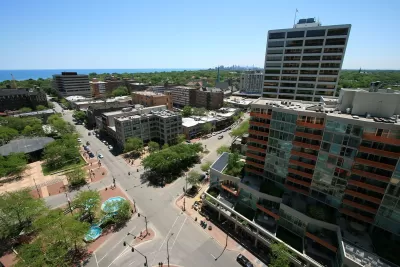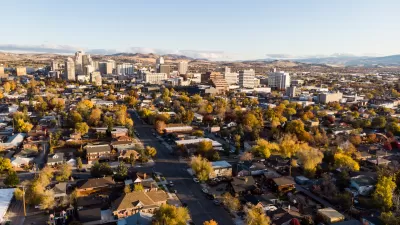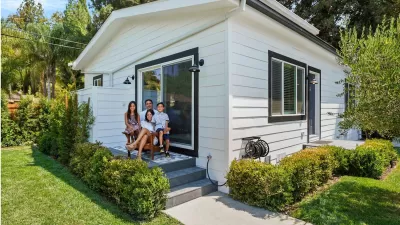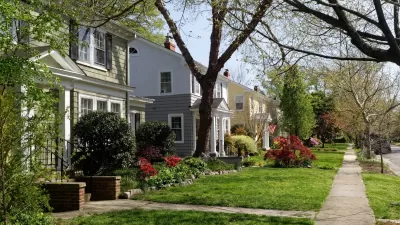A worker-owned developer in Evanston uses sustainable materials to build efficient, affordable ADUs to help homeowners create generational wealth.

A cooperatively owned housing developer in Evanston, Illinois could provide a model for efficient, affordable construction, writes Ashira Morris in Next City. The Evanston Development Cooperative, which specializes in building accessory dwelling units (ADUs), was founded in 2018 when the city started revising its zoning code to permit 'granny flats.'
Before EDC’s founding, the city did the work of legalizing existing ADUs, which were technically illegal because of changes made to city zoning in the 1950s to prioritize single-family housing. In 2020, thanks in part to EDC’s advocacy, two additional key changes were made: allowing the construction of ADUs on any residential property and legalizing internal ADUs, such as an attic or basement conversion.
The update also widened the ADU rules to include duplexes, not just single-family homes. "Resolving that line item was an equity issue, [EDC co-founder Robinson] Markus says," noting that Evanston's duplexes are disproportionately located in communities of color. "'Only certain parts of the city were allowed to build intergenerational wealth and increase their property value through this mechanism,' [Markus] says, 'while other parts of the city were often being denied this opportunity.'"
To share their experience, EDC co-published a step-by-step ADU guidebook with the city. "The co-op is also working with the city on an affordable housing pilot project, with one two-bedroom unit intended for a small family currently under construction behind a duplex." In the future, EDC hopes to scale up their operation with the same worker-owned model.
FULL STORY: Cooperatively Owned Builder Sees Affordable Housing, Climate Action in ‘Granny Flats’

Study: Maui’s Plan to Convert Vacation Rentals to Long-Term Housing Could Cause Nearly $1 Billion Economic Loss
The plan would reduce visitor accommodation by 25,% resulting in 1,900 jobs lost.

North Texas Transit Leaders Tout Benefits of TOD for Growing Region
At a summit focused on transit-oriented development, policymakers discussed how North Texas’ expanded light rail system can serve as a tool for economic growth.

Using Old Oil and Gas Wells for Green Energy Storage
Penn State researchers have found that repurposing abandoned oil and gas wells for geothermal-assisted compressed-air energy storage can boost efficiency, reduce environmental risks, and support clean energy and job transitions.

Private Donations Propel Early Restoration of Palisades Playground
Los Angeles has secured over $1.3 million in private funding to restore the Pacific Palisades playground months ahead of schedule, creating a modern, accessible space that supports community healing after recent wildfires.

From Blight to Benefit: Early Results From California’s Equitable Cleanup Program
The Equitable Community Revitalization Grant (ECRG) program is reshaping brownfield redevelopment by prioritizing projects in low-income and environmental justice communities, emphasizing equity, transparency, and community benefits.

Planting Relief: Tackling Las Vegas Heat One Tree at a Time
Nevada Plants, a Las Vegas-based nonprofit, is combating the city’s extreme urban heat by giving away trees to residents in underserved neighborhoods, promoting shade, sustainability, and community health.
Urban Design for Planners 1: Software Tools
This six-course series explores essential urban design concepts using open source software and equips planners with the tools they need to participate fully in the urban design process.
Planning for Universal Design
Learn the tools for implementing Universal Design in planning regulations.
Ascent Environmental
Borough of Carlisle
Institute for Housing and Urban Development Studies (IHS)
City of Grandview
Harvard GSD Executive Education
Toledo-Lucas County Plan Commissions
Salt Lake City
NYU Wagner Graduate School of Public Service





























